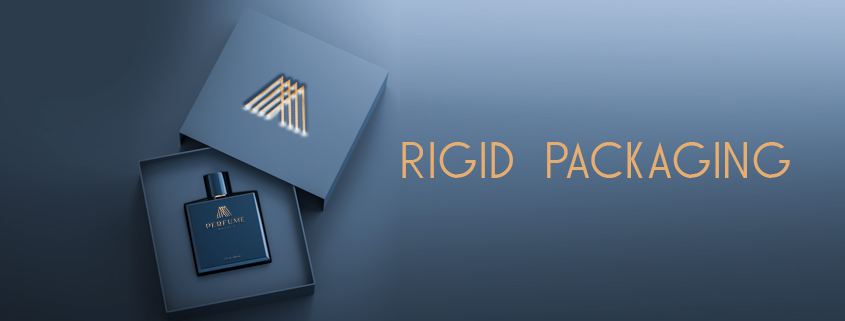Different types of structures in packaging industry were demonstrated in the article related to packaging and its history. The developed structures in the packaging industry (rigid packaging and flexible packaging) originate from the two important issues of transferring environmental pollution to the product and biological interactions of the product. It is better to first familiarize yourself with the features, advantages and disadvantages of this type of packaging so that you can make the best choice for packaging of your products. In this article, we will talk about ?What is the rigid packaging. Please follow this article on Karya Polymer website.
What is the rigid packaging?
Rigid packaging is implicitly a type of packaging that its shape does not change after placing the product inside and sealing it due to changes in temperature and pressure. This type of packaging is made of more rigid materials than the materials used in flexible packaging. Product protection is the first priority in the rigid packaging. So, this type of packaging is used for products that need to maintain their integrity. Rigid packaging typically protects the product from possible stress without breaking or compromising its integrity. For this purpose, rigid packaging is used to store products that need to be protected from damage, heat, light, etc.
Different types of rigid packaging:
As mentioned, rigid packaging includes strong and durable materials that are designed to prevent bending, curve, getting hit or breaking. Different forms of rigid packaging materials include: glass, hard plastic, carton, metal, etc. Rigid packaging materials are usually more expensive than their flexible alternatives.
It should be noted that rigid packaging guarantees the safety of the product. Rigid packaging may break and destroy the product if it falls. Jam jars and pickle jars are the examples of available rigid packaging in the market and may break and destroy if they fall.
Some common examples of rigid packaging include:
• Carton boxes for cereal and other snacks
• Glass containers for sauces, flavoring, pickles and Jams
• Glass bottles for perfume and other beauty products
• Plastic bottles used for water and other liquids
• Plastic containers used for yogurt, cosmetics products
• Plastic barrels and gallons used for liquids and powders
• Metal tins used for durable consumables
• Metal cans used for deodorant and other health products
Advantages and disadvantages of rigid and flexible packaging
Each type of rigid or flexible packaging has unique advantages and disadvantages that may challenge packaging manufacturers or consumers.
Advantages of rigid packaging
Before talking the advantages of rigid packaging, it is better to mention that this type of packaging, in addition to more and more accurate protection of the product, can help in inducing a feeling of luxury in the final product. For example, in the packaging of perfume and cosmetic products, this type of packaging is used to create more added value and show the luxury of the product. Also, in this type of packaging, various rigid packaging materials may be used in one package.
The following are the advantages of rigid packaging:
- Having more strength
- Inducing and showing the luxury of the product
- Not affecting the taste of food
- Use of recyclable materials
Disadvantages of rigid packaging
In addition to the above mentioned advantages, rigid packaging has disadvantages that we will discuss further:
• Occupying more space
Compared to flexible packaging, rigid containers often require more space and can take up more space on shelves and cabinets.
• More shipping costs
Rigid packaging induces higher shipping costs than flexible packaging due to its wider shape and heavier weight.
• More expensive
Due to the nature of the materials used to form rigid packaging, they are usually more expensive than flexible packaging types.
• If not recycled, they take up more space in landfills
Environmental effects
In this section, we intend to investigate the environmental effects of rigid packaging:
• Materials used in rigid packaging are widely recycled:
Most of the rigid packaging materials are recyclable, including glass, plastic, and carton.
• Great effect on reducing product waste:
In general, packaging avoids material damage and reduces product waste by protecting the contents from heat, light, smell, etc.
Which type of packaging should you choose?
When choosing the type of packaging, you must answer several questions so that you can make the right choice.
• Does your product need high stress protection and maintain integrity? Rigid packaging may be the best choice in the mentioned packaging.
• Is the environmental effect of packaging important to you or your customers?
• Are you looking to reduce costs in your packaging? Rigid packaging is not the right choice for you.
• Is your brand looking to instill the luxury of the product? Rigid packing will be the best choice for your needs.
• Are you looking to reduce shipping costs? If you are looking to reduce costs in the shipping department, flexible packaging is a more reasonable choice.
In this article, we tried to investigate the rigid packaging in detail. Knowing the advantages and disadvantages of each type of packaging can have a significant impact on the correct presentation of the product and management of the costs. Next, we will introduce flexible packaging. Stay with Karya Polymer.




Leave a Reply
Want to join the discussion?Feel free to contribute!